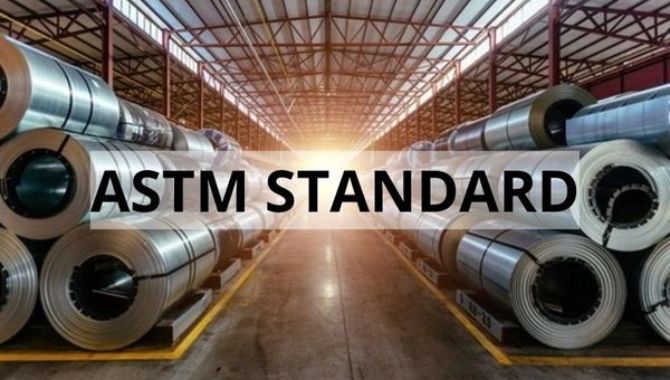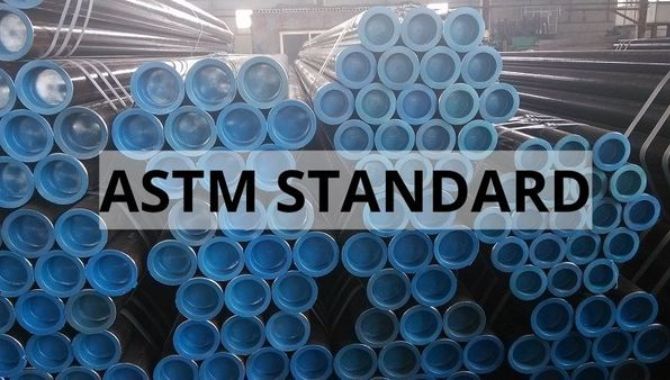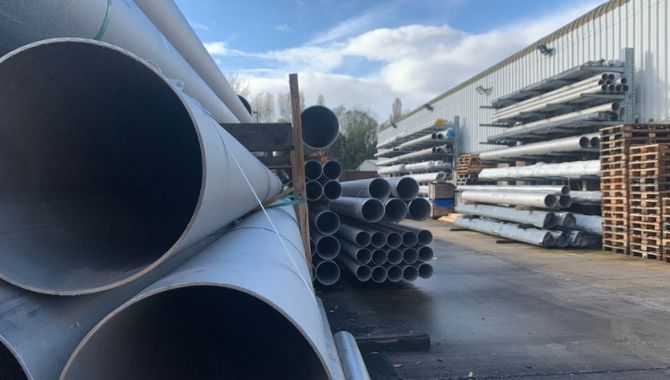Inconsistent testing and varying material quality causes major problems for manufacturers worldwide. ASTM handles these issues by providing uniform test methods and specifications.
This blog post is a complete guide in which we will examine ASTM standards, their importance and how they are developed. We will also discuss its types, how to cite ASTM and its impact on global industries.
What is ASTM Standard?

ASTM Standard are globally recognized technical guidelines, made by ASTM International. These standards guarantee consistent product quality, performance and safety across different industries.
These standards play an important role in keeping consistency, compatibility and reliability in manufacturing processes and products globally. They also facilitate innovation and global trade.
These standards aims at offering a framework for assessing systems, products, and materials with the use of common language. They set benchmarks for regulatory compliance and quality control.
How ASTM Standards Are Developed?
ASTM standards evolve through a strict five-step process. First, experts identify a need for a new standard. Next, technical specialists draft the standard using industry best practices. Then, committee members thoroughly review and refine the draft by multiple voting rounds.
Once consensus is reached, the standard gets final approval. The approved standard then receives a particular alphanumeric name for integrations and easy reference in different areas.
What are the Different Types of ASTM Standards?

To accommodate the needs of various industries, ASTM International has presented different types of standards. These different types are tests, specifications, guides, practices, classifications, terminologies and tables.
Now, we will discuss these types one by one to learn their uses and particular roles.
Test Methods (Standard Test Methods)
These methods are accurate procedures that give particular results. They provide step-by-step instructions for evaluating product features, system performance, material properties and product features. These standards will provide you with procedures, test sample requirements, apparatus specifications and calculation rules. This method guarantees consistent and reliable results in different laboratories.
For example, the standard ASTM E8 is a test method for tension testing of metallic materials. It also shows how to determine the yield strength, tensile strength and elongation. This is important in assessing material performance for different engineering uses.
| Standard Test Method | Purpose |
| ASTM D882 | Testing Tensile Properties of Thin Plastic Sheeting |
| ASTM E8/E8M | Tension Testing of Metallic Materials |
| ASTM D638 | Testing Tensile Properties of Plastics |
| ASTM D3039 | Testing Tensile Properties of Polymer Matrix Composite Materials |
| ASTM D570 | Testing Water Absorption of Plastics |
Specifications (Standard Specifications)
Specifications define accurate requirements that systems, products, materials or services must fulfill. These detailed documents cover physical properties, performance criteria, testing methods and chemical composition. They also serve as a benchmark for buyers and manufacturers to keep quality for different industries.
ASTM A36 is a prime example. It specifies the tensile strength, chemical composition, tensile strength, and yield point that A36 steel must have to meet industry standards. This standard makes sure of quality in manufacturing and construction operations.
| Specification | Purpose |
| ASTM A36 | Defines mechanical properties, chemical composition and tolerances for carbon structural steel used in construction. |
| ASTM C150 | Specifies physical and chemical requirements for types of portland cement used in concrete. |
| ASTM D975 | Describes requirements for diesel fuel oils, for different engines and applications. |
| ASTM F1554 | Specifies requirements for carbon, alloy steel anchor bolts and carbon-boron for structural applications. |
| ASTM A615 | Defines requirements for plain and deformed carbon-steel bars used as reinforcement in concrete structures. |
Guides (Standard Guides)
Guides give a range of choices or instructions without advising a particular course of action. They assist with certain tasks like interpreting data or assessing materials. The adaptability of these guides allows you to choose the best approach based on your particular needs and situations.
For example, ASTM D5878 is a standard for using rock mass classification systems in engineering operations. It presents different methods for determining rock characteristics which help engineers to choose the most appropriate system for their project needs.
| Guide | Purpose |
| ASTM E1527 | Phase I Environmental Site Assessments |
| ASTM D5878 | Rock Mass Classification Systems in Engineering Operations. |
| ASTM F1166 | Human Engineering Design for Marine Systems, Equipment, and Facilities |
| ASTM E2500 | Pharmaceutical and Biopharmaceutical Manufacturing Systems and Equipment: Specification, Design and Verification |
| ASTM E2601 | Data Collection for Fire Investigations |
Practices (Standard Practices)
Practices are in-depth procedures for carrying out particular operations that don’t produce test results. They cover a broad type of activity, from sample preparation to equipment maintenance. These standards give detailed instructions to guarantee safety and better performance.
ASTM D4169 is a good example. It describes procedures for simulating distribution hazards and practices for testing performance of shipping containers. This standard also specifies procedures for simulating distribution hazards. It helps manufacturers design packaging that can handle natural conditions during handling and transport.
| Standard Practice | Purpose |
| ASTM E1527 | Phase I Environmental Site Assessments |
| ASTM E2018 | Property Condition Assessments |
| ASTM D6751 | Testing Biodiesel Fuel Blend Stock |
| ASTM E1188 | Collection and Preservation of Information and Physical Items |
| ASTM D4169 | Standard Guide for Performance Testing of Shipping Containers and Systems |
Classifications (Standard Classifications)
Classifications create logical arrangements for categorizing systems, products, materials or services into groups based on their particular properties and qualities. These standards develop a common language for industry professionals which allows standardization and proficient communication across different areas.
For example, ASTM D2487 is a classification standard that arranges soils based on lab test results of particle size properties, liquid limit and plasticity index for engineering operations. This standard system helps geologists and engineers identify and describe soil types constantly.
| Classification | Purpose |
| ASTM D2487 | Classification of Soils for Engineering Purposes |
| ASTM D388 | Classification of Coals by Rank |
| ASTM D6751 | Classification and Specification for Biodiesel Fuel |
| ASTM E1049 | Classification of Aircraft Noise Characteristics |
| ASTM D4000 | Classification System for Specifying Plastic Materials |
Terminologies (Standard Terminologies)
These are complete collections of terms and definitions of particular fields or industries. They also define materials, processes, equipment, standard terminologies and technical ideas used within a particular domain which promotes accuracy and consistency in technical communication.
Take ASTM E284, for example. This standard gives terminology for appearance concepts like opacity, gloss, texture and color. These terminologies help you communicate about visual properties of products and materials in manufacturing and different operations.
| Terminology | Purpose |
| ASTM F2412 | Standard Terminology Relating to Footwear |
| ASTM D1079 | Standard Terminology Relating to Roofing and Waterproofing |
| ASTM E631 | Standard Terminology of Building Constructions |
| ASTM E284 | Standard Terminology of Appearance |
| ASTM E176 | Standard Terminology of Fire Standards |
Tables (Standard Tables)
These tables are a collection of arranged data in an organized form to provide quick reference or particular information within a field or industry. They also provide specifications, measurements or values that are important for product design and decision making in different industries.
For example, ASTM D638 provides a standard table for tensile properties of plastics. It also gives reference values for modulus of elasticity, elongation and tensile strength for different plastic materials. This helps engineers in quality control and material selection.
| Standard Table | Purpose |
| ASTM D1250 | Petroleum Measurement Tables |
| ASTM D341 | Viscosity-Temperature Charts for Liquid Petroleum Products |
| ASTM E29 | Standard Practice for Using Significant Digits in Test Data |
| ASTM D638 | Standard Test Method for Tensile Properties of Plastics |
| ASTM D6751 | Biodiesel Fuel Blend Stock (B100) for Middle Distillate Fuels |
Why ASTM Standards are Important?

They play an important role in different industries. These standards guarantee smooth global trade, product quality, innovation and better safety. Let’s discuss their importance one by one.
Ensures Product Consistency and Reliability
ASTM standards create a consistent framework for product testing and manufacturing. They also set accurate specifications which guarantees reliable quality across different manufacturers and batches. This standardization builds consumer trust, decreases variability and improves flexibility.
Facilitates Global Trade and Market Access
These standards provide a common language for better performance and quality. This eliminates trade complications by setting a benchmark for manufacturers and buyers globally. This results in smoother international deals, new market opportunities and decreased technical barriers.
Quality Control and Safety
It can also be seen in many industries, the implementation of these standards can improve the characteristics and efficiency of products. They include specific performance and testing procedures that have to be followed to make sure that all the products produced are a certain level of safety. These standards constantly improve product quality which increases reliability and decreases defects.
Development of New Technologies
These standards are crucial in the area of bringing innovation in the different developing technologies. They also give a framework for processes, assessing new materials and products. This standardization decreases time-to-market, increases R&D cycles and guarantees compatibility between different systems. For example, ASTM’s additive manufacturing standards have eased production and rapid prototyping.
Challenges of Compliance
These standards have different benefits for the organization, but it is also difficult to follow them. Companies must keep up with frequent changes and dedicate resources for testing, certification and complex technical needs. This means that organizations must invest in training personnel, particular equipment and strong quality control systems.
Cornerstone of Modern Industry
ASTM standards form the basis of modern industrial ways. They also provide a common language for product design, quality control and regulatory compliance for different areas. They also facilitate creativity, proficient production and less waste.
Industries Influenced by ASTM Standards

These standards affect many crucial industries in a significant manner. Now, we will explore how these standards influence different industries like construction, manufacturing, petroleum and healthcare.
Construction Industry
These standards play an important role in construction industries. They make sure that building materials meet strict quality and safety rules. More than 2,000 standards guide the construction industries. They cover a broad range of materials like concrete, steel, and asphalt. An important standard ASTM C39 is used for concrete testing and ASTM C150 for Portland cement. They help in promoting creativity and preventing structural failures in construction material and method.
Manufacturing and Advanced Manufacturing
The manufacturing industry depends on more than 1,500 ASTM standards. These guides cover everything from material testing to quality control and production methods.
In advanced manufacturing, ASTM F3091/F3091M is important which specifies the need for plastic parts made by using powder bed fusion processes. This standard applies to material handling, both filled and unfilled plastic materials, fabrication of test specimens, process types and materials.
Healthcare and Medical Devices
ASTM standards play an important role in healthcare and medical devices. More than 300 standards guide professionals in this area. These standards cover things like equipment, implants and surgical tools.
One of the important standards is ASTM F2129. It determines the corrosion possibility of small metal implant devices using cyclic potentiodynamic polarization. This applies to things like cardiac occluders, vascular stents and filters.
Petroleum and Energy Industry
These standards are important in energy and petroleum sectors. As they increase the regulatory compliance in fuel distribution and refining.
For example, ASTM D975. It lists seven grades of diesel fuel which include ultra-low sulfur diesel (ULSD) with a maximum of 15 ppm sulfur. Another example is ASTM D86 which covers distillation of petroleum products. It also determines boiling range characteristics for fuels like gasoline and diesel.
Environmental and Sustainability Sectors
ASTM standards are important for sustainability efforts, protection of environment, waste handling, green construction and eco-friendly practices in different industries.
ASTM standard E2986 guides in assessing sustainability metrics by identifying models and parameters. It also helps in determining environmental aspects during manufacturing process. Whereas ASTM E2107 highlights procedures for environmental regulatory audits which guarantees the organization should meet relevant regulations and laws.
How to Cite ASTM Standards?

Citing ASTM standards accurately is important for technical writing. Main parts of an ASTM citation are: The common format for citation is: Standard Designation, ASTM International, Publication Year, DOI.
- Standard number (ex. ASTM C33)
- Standard title (ex. “Concrete Aggregates Spec”)
- Publication year (ex. 2019)
- Publisher (ASTM International)
- DOI (Digital Object Identifier)
General format for citation is: Number, Title, Publisher, Year, DOI.
For in-text citation, use (Number, Year). Whereas in reference list include Number, Year, “Title,” Publisher, Location, DOI, website.
For example:
ASTM C33, 2003, “Concrete Aggregates Spec,” ASTM International, PA, 2003, DOI: 10.1520/C0033-03, www.astm.org.
Conclusion
ASTM standards are important in different industries to guarantee consistency, quality and safety. These standards give a common terminology for testing methods and product specifications which facilitates in innovation and global trade. From construction to healthcare, ASTM standards have impact on many areas. While following these standards can be difficult but implementing them can decrease the costs a lot.
As industries keep advancing, ASTM standards will stay an important tool for keeping quality and progress in the global marketplace.
FAQs
What’s the difference between ASTM and ISTA testing standards?
ASTM standards are more flexible and allow customization of testing methods for shipping environments and particular products. Whereas ISTA standards have strict and detailed procedures which makes them appropriate for pharmaceutical and medical industries.
Additionally, ISTA testing is usually quicker, more time proficient and cheaper than ASTM, though ASTM may need more advanced equipment.
Are ASTM Standards required?
These are voluntary consensus standards. They only become mandatory when contractors or regulatory agencies particularly ask you to use them. Different industries apply ASTM standards as best practices but following them is not legally mandatory.




